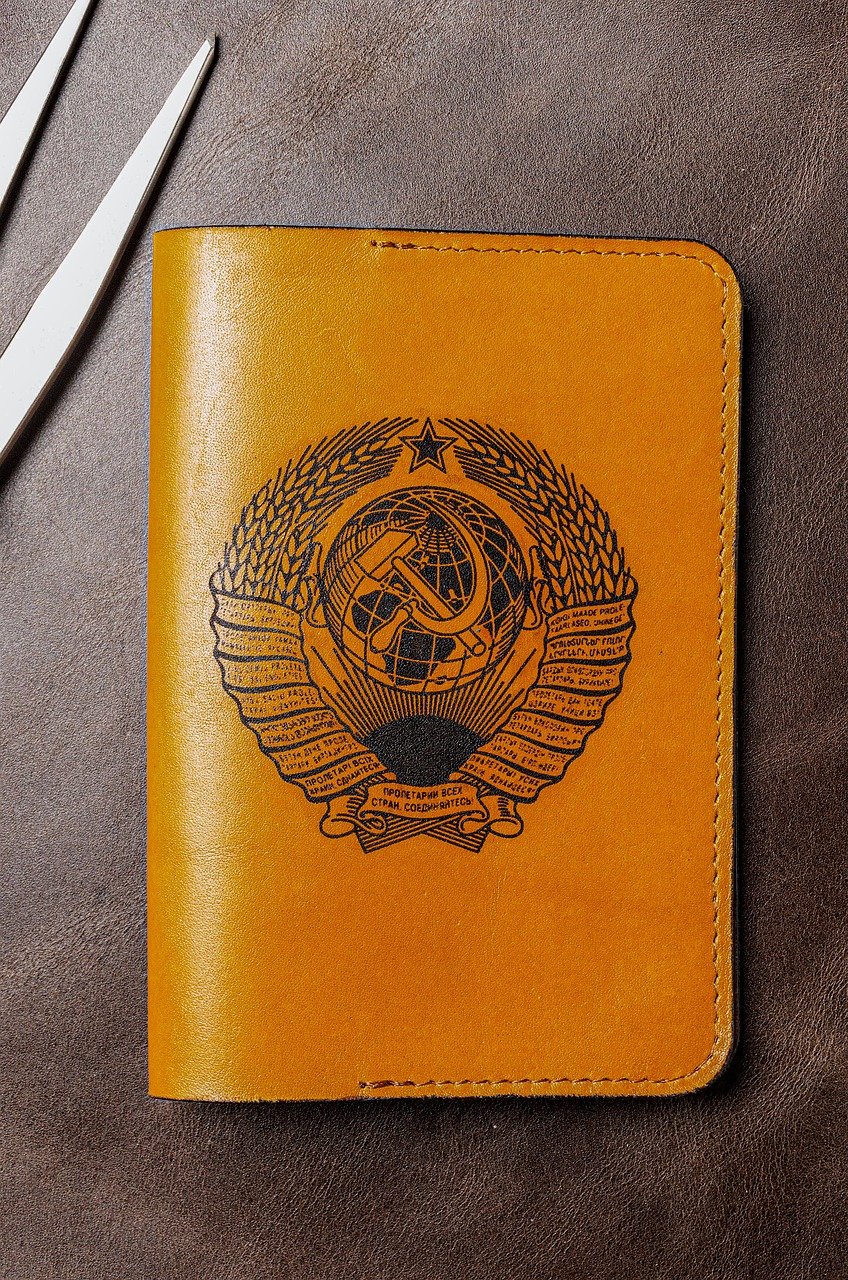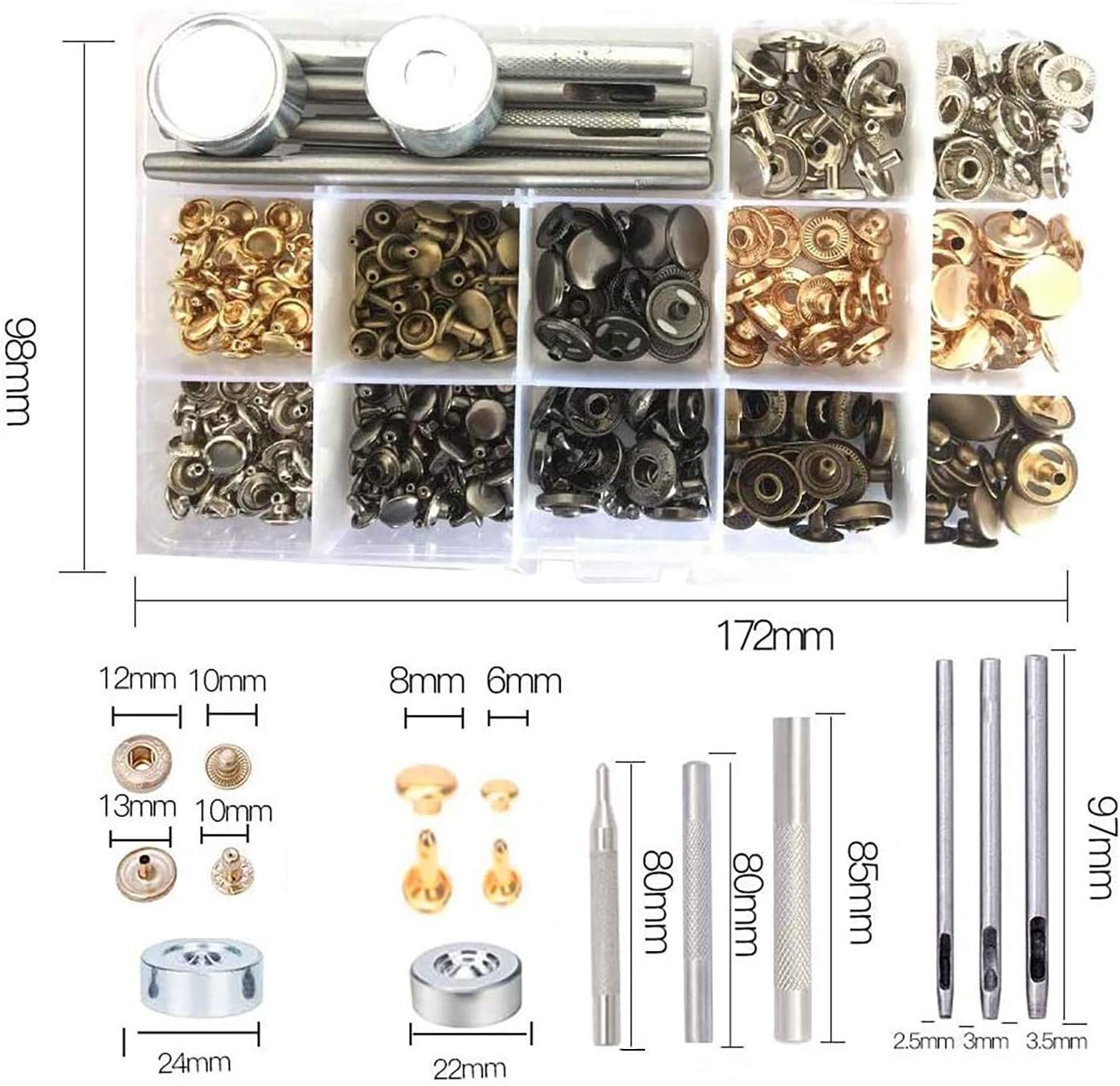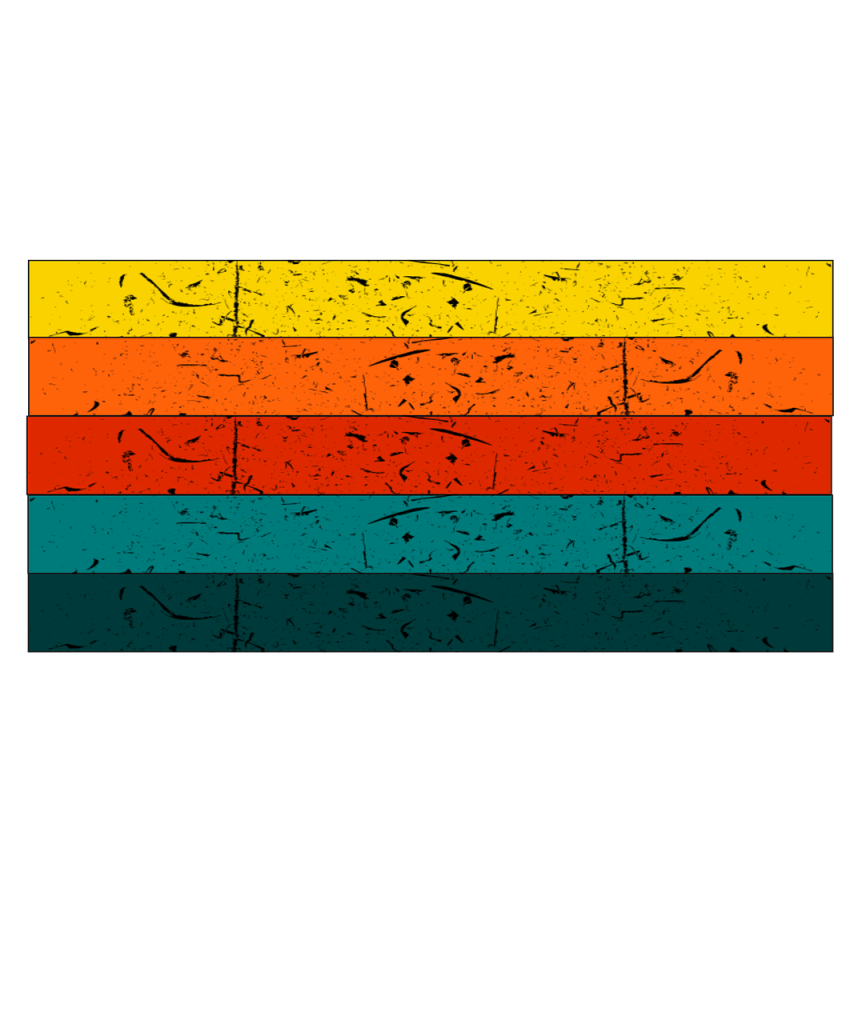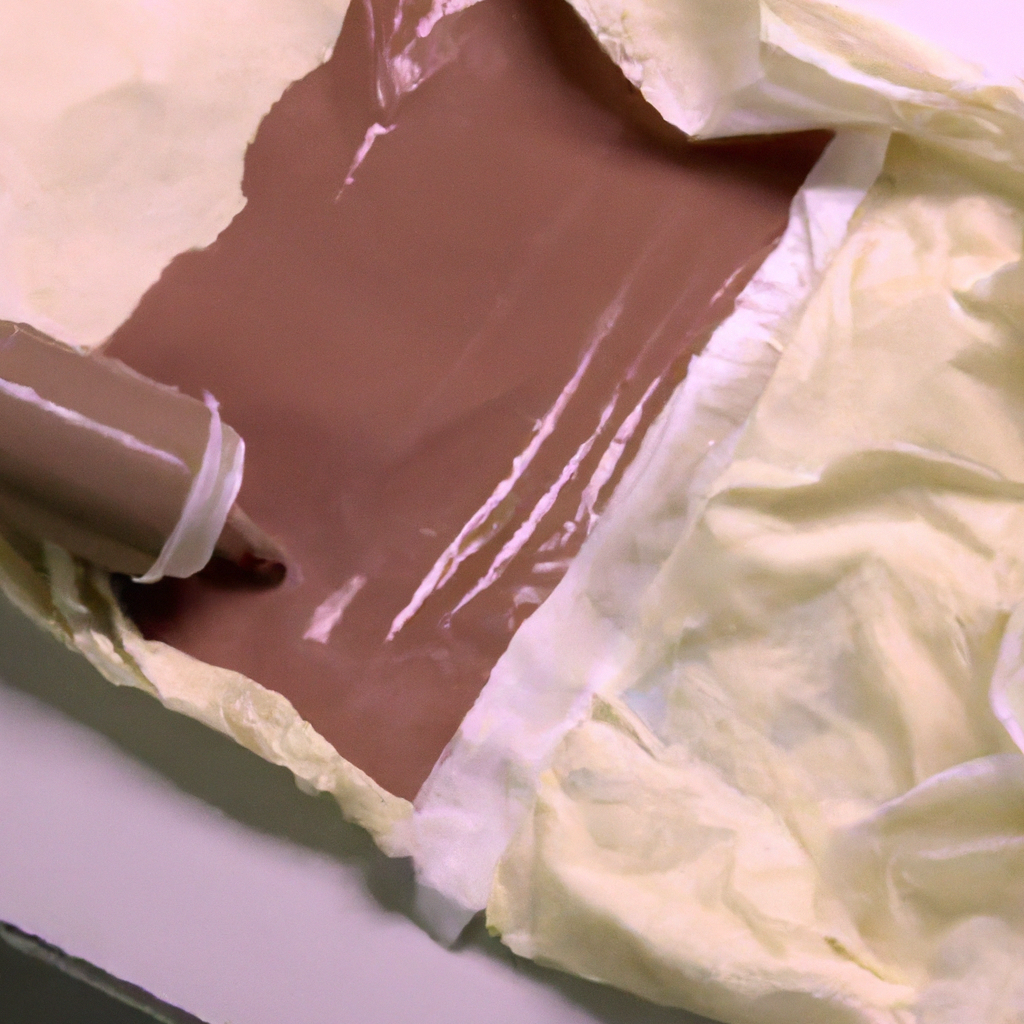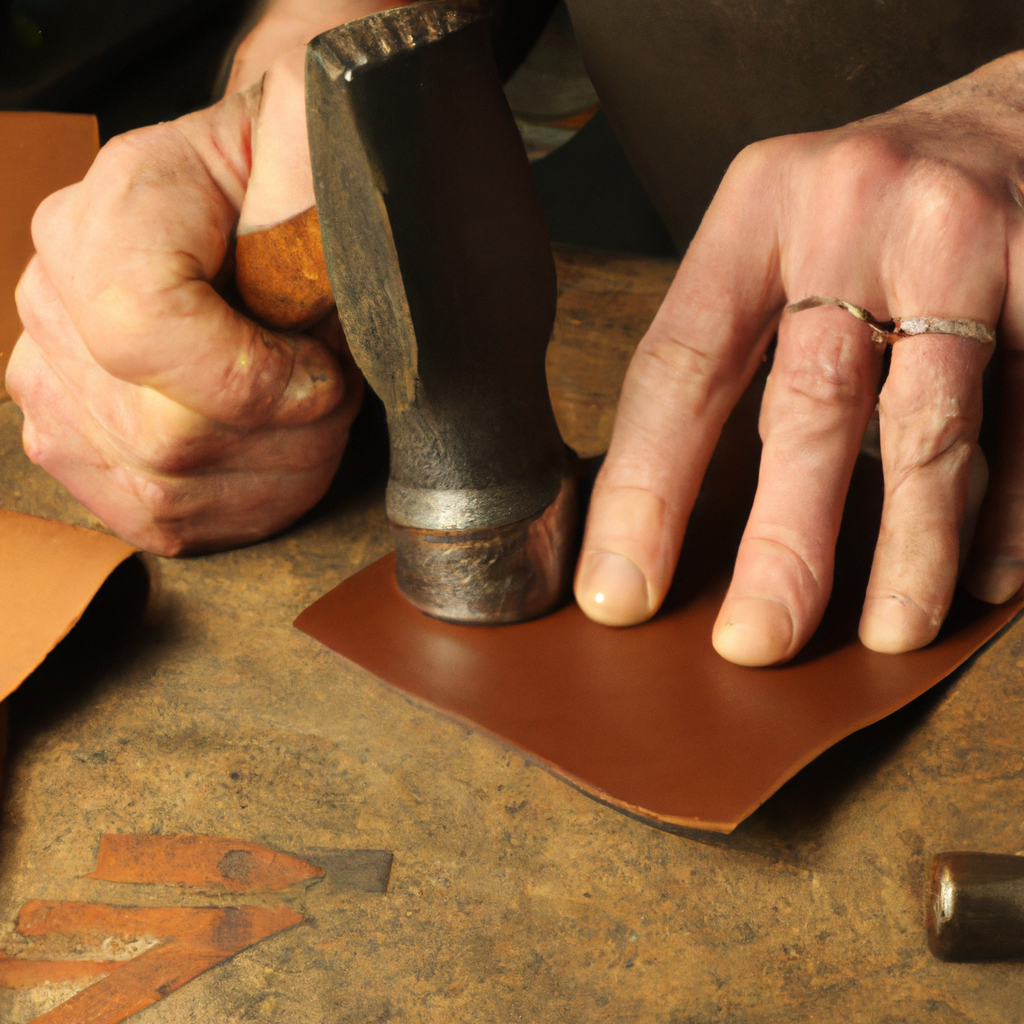Have you ever wondered how to effortlessly add vibrant color to your tooled leather? Look no further! In this article, we will explore a few simple yet effective techniques that you can try at home. With these easy methods, you’ll be able to infuse your leather projects with a burst of personality and creativity. Whether you’re a beginner or an experienced leatherworker, these tips will surely inspire you to experiment with adding color to your tooled leather creations. Let’s dive in and discover the exciting world of leather coloring together!
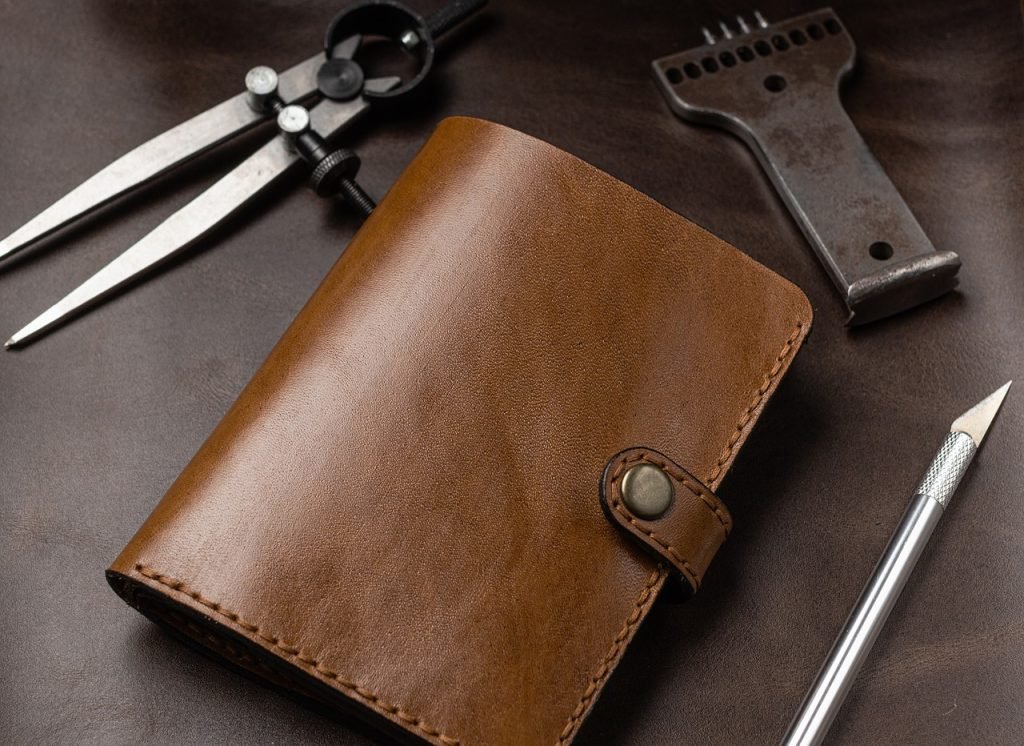
Water-based Leather Dye
Benefits of using water-based leather dye
Water-based leather dye is a popular choice for adding color to tooled leather for several reasons. First and foremost, water-based leather dye is environmentally friendly and non-toxic. Unlike other types of dyes that may contain harmful chemicals, water-based leather dyes are safe to use and do not pose a risk to your health or the environment. Another benefit of water-based leather dye is its versatility. It can be easily mixed with other colors to create custom shades and tones, allowing you to achieve unique and personalized results. Additionally, water-based leather dye has a fast-drying formula, which means you can complete your leather dyeing project in a shorter amount of time compared to other types of dyes.Step-by-step guide to using water-based leather dye
- Start by gathering all the necessary materials, including water-based leather dye, a sponge applicator or brush, a clean cloth or paper towel, and leather finish or conditioner.
- Make sure the leather surface is clean and free from any dirt or debris. Use a leather cleaner or mild soap and water to gently clean the surface, and allow it to dry completely.
- Shake the water-based leather dye bottle well to ensure the color is evenly distributed.
- Dip the sponge applicator or brush into the dye, making sure to apply a small amount at a time. Start by applying the dye to a small, inconspicuous area of the leather to test the color and ensure it is what you desire.
- Apply the dye to the leather using gentle, even strokes. Be sure to cover the entire surface evenly, paying attention to any intricate detailing or tooling on the leather.
- Allow the dye to dry completely before applying additional coats. Depending on the desired color intensity, you may need to apply multiple coats of dye, allowing each coat to dry before applying the next.
- Once you are satisfied with the color, use a clean cloth or paper towel to remove any excess dye and buff the leather surface to a smooth finish.
- For added protection and to enhance the longevity of the dye, apply a leather finish or conditioner according to the manufacturer’s instructions.
Acrylic Leather Paint
Advantages of using acrylic leather paint
When it comes to adding color to tooled leather, acrylic leather paint is a fantastic option with several advantages. One of the main advantages is the wide range of colors available. Acrylic leather paint comes in a vast array of shades and tones, allowing you to find the perfect color to match your vision. Another benefit of acrylic leather paint is its ability to adhere well to leather surfaces. With its strong bonding properties, acrylic leather paint creates a durable and long-lasting color finish on tooled leather. Once the paint has dried, it becomes water-resistant and can withstand regular wear and tear, making it ideal for items like belts, wallets, and handbags. Additionally, acrylic leather paint is easy to work with and offers excellent coverage. Its consistency allows for smooth and even application, whether you choose to use a brush, sponge, or airbrush. This makes it a great choice for both beginners and experienced leather artists alike.Applying acrylic leather paint: a step-by-step process
- Start by gathering all the necessary materials, including acrylic leather paint, a paintbrush or sponge, a clean cloth or paper towel, and leather finish or conditioner.
- Ensure the leather surface is clean and free from any dirt or debris. Use a leather cleaner or mild soap and water to gently clean the surface, and allow it to dry completely.
- Before applying the paint, it is recommended to prepare the leather surface by lightly sanding it with fine-grit sandpaper. This helps to create a better bonding surface for the paint.
- Shake the acrylic leather paint bottle well to ensure the color is thoroughly mixed.
- Dip your paintbrush or sponge into the paint, making sure to apply a small amount at a time. Begin by applying the paint to a small, inconspicuous area of the leather to test the color and ensure it is what you desire.
- Apply the paint to the leather using even strokes, working in small sections. If the paint is too thick, you can dilute it with a bit of water to achieve a smoother consistency.
- Allow the paint to dry completely before applying additional coats. Depending on the desired color intensity, you may need to apply multiple coats, allowing each coat to dry before applying the next.
- Once you are satisfied with the color, use a clean cloth or paper towel to remove any excess paint and buff the leather surface to a smooth finish.
- For added protection and to enhance the longevity of the paint, apply a leather finish or conditioner according to the manufacturer’s instructions.
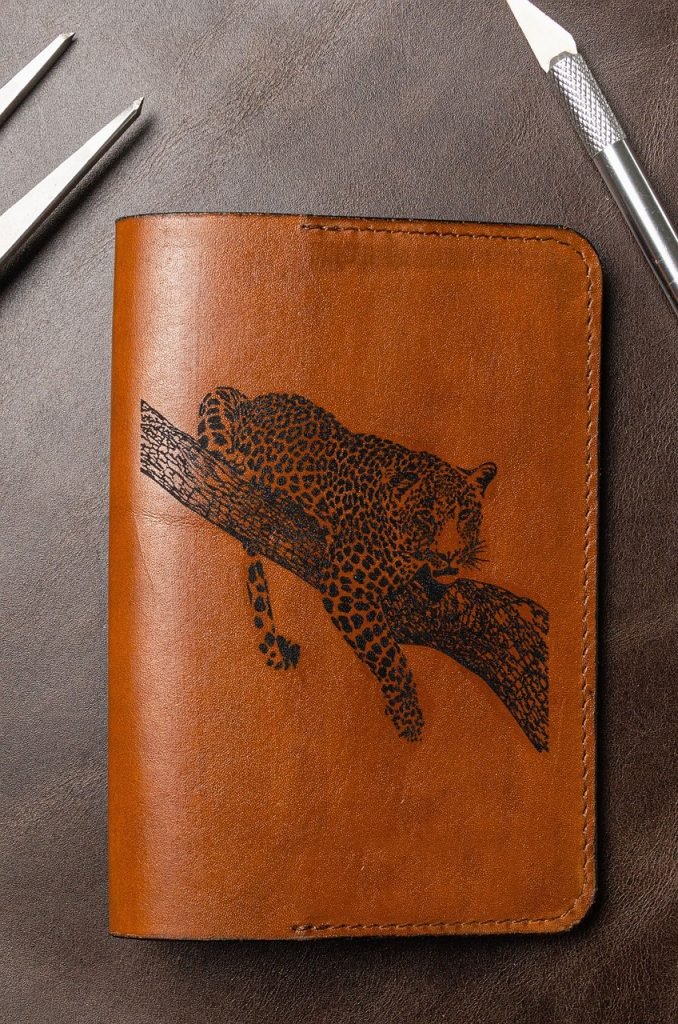
Leather Stains
Why choose leather stains?
Leather stains offer a unique way to add color to tooled leather. Unlike dyes or paints, leather stains penetrate the surface of the leather, enhancing its natural characteristics and preserving its texture. This allows for a more organic and authentic look, making leather stains a preferred choice for those who appreciate the beauty of natural leather. One of the key advantages of leather stains is their versatility. They can be used to create various effects, such as antiquing or shading, depending on the desired outcome. Leather stains come in a wide range of colors, from earthy tones to bold and vibrant shades, providing endless possibilities for customization and creativity. Another benefit of leather stains is their durability. Once applied and properly sealed, leather stains create a long-lasting color finish that can withstand daily use and exposure to environmental elements. This makes them suitable for leather items like furniture, car interiors, and accessories that require both aesthetic appeal and durability.Applying leather stains: step-by-step
- Start by gathering all the necessary materials, including leather stains, a sponge applicator or brush, a clean cloth or paper towel, and a leather finish or sealant.
- Make sure the leather surface is clean and free from any dirt or debris. Use a leather cleaner or mild soap and water to gently clean the surface, and allow it to dry completely.
- Before applying the stains, it is recommended to prepare the leather surface by lightly sanding it with fine-grit sandpaper. This helps to create a better bonding surface for the stains.
- Shake the leather stain bottle well to ensure the color is evenly mixed.
- Dip your sponge applicator or brush into the stain, making sure to apply a small amount at a time. Begin by applying the stain to a small, inconspicuous area of the leather to test the color and ensure it is what you desire.
- Apply the stain to the leather using gentle, even strokes. Start with a light layer of stain, allowing it to penetrate the surface, and gradually build up the color intensity as desired.
- To create shading or antiquing effects, apply a darker stain to the recessed areas or areas where more depth is desired. Use a clean cloth or sponge to gently blend and feather the stain, creating a natural and seamless transition between colors.
- Allow the stain to dry completely before applying additional coats or sealing the leather. Depending on the desired color intensity, you may need to apply multiple coats, allowing each coat to dry before applying the next.
- Once you are satisfied with the color, use a clean cloth or paper towel to remove any excess stain and buff the leather surface to a smooth finish.
- To protect the color and provide a long-lasting finish, apply a leather finish or sealant according to the manufacturer’s instructions.
Leather Edge Paint
Benefits of using leather edge paint
Leather edge paint serves as an excellent way to add color and finish to the edges of tooled leather. It offers several benefits that make it a popular choice among leather artisans and crafters. One of the main advantages of leather edge paint is its ability to provide a professional and polished look. By applying edge paint to the edges of your tooled leather, you can achieve a clean and neat finish, hiding any imperfections or frayed edges. This is especially crucial for items like belts, wallets, and bags, where the edges are highly visible and can significantly impact the overall appearance of the finished product. Another benefit of leather edge paint is its durability. Once applied, it forms a protective barrier on the edges of the leather, enhancing its resistance to wear and tear. This helps to prevent fraying and extends the lifespan of the leather item, ensuring that it maintains its aesthetic appeal for a longer period of time. Additionally, leather edge paint offers a wide range of color options, allowing you to match or contrast the color of the leather for a more personalized and customized look. Whether you prefer a subtle and seamless finish or a bold and eye-catching pop of color, leather edge paint can help you achieve the desired effect.How to apply leather edge paint effectively
- Start by gathering all the necessary materials, including leather edge paint, an edge paint applicator or brush, a clean cloth or sponge, and a leather finish or sealant.
- Ensure the edges of the tooled leather are clean and free from any dirt or debris. Use a leather cleaner or mild soap and water to gently clean the edges, and allow them to dry completely.
- Shake the leather edge paint bottle well to ensure the color is thoroughly mixed.
- Dip your edge paint applicator or brush into the paint, making sure to apply a small amount at a time. Begin by applying the paint to a small, inconspicuous area of the leather to test the color and ensure it is what you desire.
- Apply the paint to the edges of the leather using gentle and even strokes. Start from one end and work your way to the other, ensuring full coverage along the entire edge.
- Allow the paint to dry completely before applying additional coats. Depending on the desired color intensity and coverage, you may need to apply multiple coats, allowing each coat to dry before applying the next.
- Once you are satisfied with the color, use a clean cloth or sponge to remove any excess paint and buff the edges to a smooth finish.
- To protect the color and provide added durability, apply a leather finish or sealant according to the manufacturer’s instructions. This will help to prevent chipping, fading, and any damage to the painted edges.
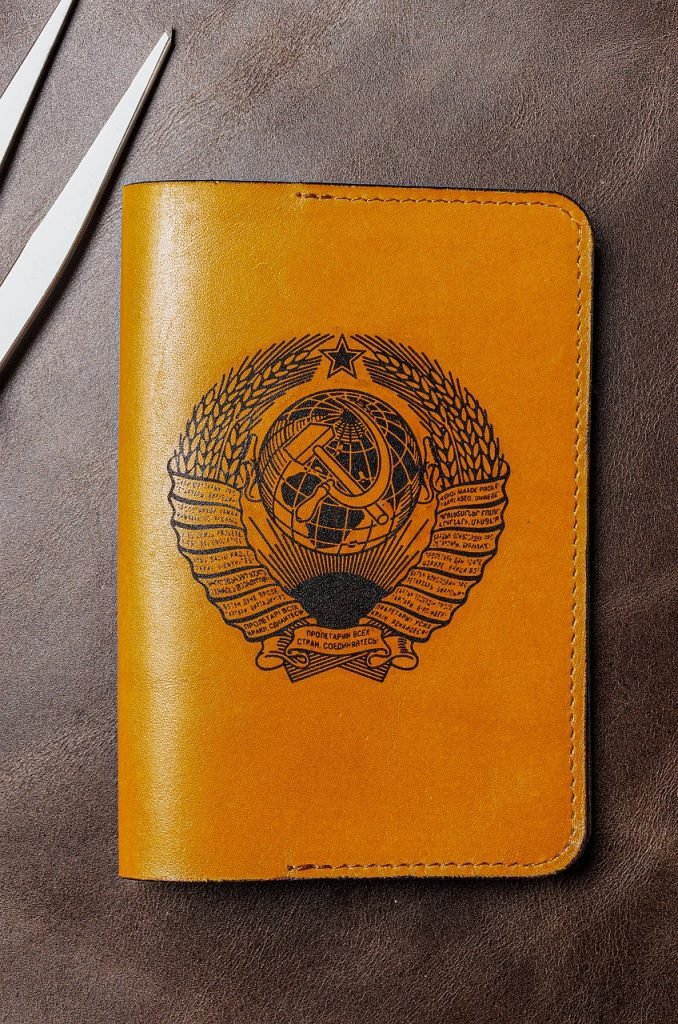
Leather Dye Pens
Understanding leather dye pens
Leather dye pens are a handy tool for adding color to tooled leather, particularly when working on detailed or intricate designs. They offer precision and control, allowing you to fill in small areas or touch up specific sections with ease. One of the main benefits of leather dye pens is their convenience. They come in a pen-like form, making them easy to handle and control. The fine-tip applicator allows for precise application, which is especially useful when working on small and intricate tooling patterns. Leather dye pens also offer a quick and efficient way to add color to tooled leather. The dye is already pre-loaded in the pen, eliminating the need for additional brushes or sponges. This saves time and effort, making leather dye pens an excellent choice for both beginners and experienced leather crafters. Additionally, leather dye pens come in a variety of colors, allowing you to match or contrast the color of the leather depending on your design preferences. They can also be easily blended or layered to achieve different shades and tones, giving you the freedom to create unique and personalized results.Using leather dye pens: a simple guide
- Start by gathering all the necessary materials, including leather dye pens, a clean cloth or paper towel, and a leather finish or sealant.
- Ensure the tooled leather surface is clean and free from any dirt or debris. Use a leather cleaner or mild soap and water to gently clean the surface, and allow it to dry completely.
- Shake the leather dye pen well to ensure the color is evenly distributed.
- Carefully remove the cap of the leather dye pen, being mindful not to put too much pressure that could cause the dye to splatter.
- Test the dye on a small, inconspicuous area of the leather to ensure the color is what you desire and to get a feel for the flow of the dye.
- Begin applying the dye to the tooled leather using the fine-tip applicator. Start from one end and work your way to the other, filling in small areas or touching up specific sections as needed.
- Allow the dye to dry completely. Depending on the desired color intensity and coverage, you may need to apply multiple layers of dye, allowing each layer to dry before applying the next.
- Once you are satisfied with the color, use a clean cloth or paper towel to remove any excess dye and buff the leather surface to a smooth finish.
- To protect the color and provide added durability, apply a leather finish or sealant according to the manufacturer’s instructions.
Alcohol-based Leather Dyes
Advantages of alcohol-based leather dyes
Alcohol-based leather dyes offer several advantages when it comes to adding color to tooled leather. One of the main advantages is their excellent color penetration. Alcohol-based dyes have a high level of pigmentation and can effectively penetrate the surface of the leather, resulting in vibrant and long-lasting color. Another benefit of using alcohol-based leather dyes is their fast-drying nature. As the alcohol evaporates, the dye quickly sets, allowing for efficient and productive work. This is particularly advantageous when working on larger leather projects or when multiple coats of dye are required. Alcohol-based leather dyes also offer excellent coverage. They can be easily applied to both absorbent and non-absorbent leather surfaces, ensuring even color distribution and minimizing the risk of streaks or blotches. This versatility makes alcohol-based leather dyes suitable for a wide range of leather items, including shoes, jackets, and upholstery.Applying alcohol-based leather dyes effectively
- Start by gathering all the necessary materials, including alcohol-based leather dyes, a sponge applicator or brush, a clean cloth or paper towel, and a leather finish or sealant.
- Ensure the leather surface is clean and free from any dirt or debris. Use a leather cleaner or mild soap and water to gently clean the surface, and allow it to dry completely.
- Shake the alcohol-based leather dye bottle well to ensure the color is thoroughly mixed.
- Dip your sponge applicator or brush into the dye, making sure to apply a small amount at a time. Start by applying the dye to a small, inconspicuous area of the leather to test the color and ensure it is what you desire.
- Apply the dye to the leather using gentle, even strokes. Be sure to cover the entire surface evenly, paying attention to any intricate detailing or tooling on the leather.
- Allow the dye to dry completely before applying additional coats. Depending on the desired color intensity, you may need to apply multiple coats of dye, allowing each coat to dry before applying the next.
- Once you are satisfied with the color, use a clean cloth or paper towel to remove any excess dye and buff the leather surface to a smooth finish.
- To protect the color and provide added durability, apply a leather finish or sealant according to the manufacturer’s instructions.
Leather Paint Markers
Benefits of using leather paint markers
Leather paint markers are a versatile and convenient tool for adding color to tooled leather. They offer several benefits that make them popular among both beginners and experienced leather artists. One of the main advantages of leather paint markers is their ease of use. With their pen-like design, leather paint markers provide control and precision, making them perfect for adding intricate details or filling in small areas. The fine-tip applicator allows for smooth and even application, ensuring a clean and professional-looking finish. Leather paint markers also offer a wide range of colors to choose from, allowing you to match or contrast the color of the leather depending on your design preferences. They can be easily blended or layered to create different shades and tones, providing endless possibilities for customization and creativity. Another benefit of leather paint markers is their quick-drying formula. This allows for efficient and productive work, as the paint sets rapidly, reducing the risk of smudging or smearing. It is especially advantageous when working on leather items that require multiple colors or intricate detailing.Step-by-step guide to using leather paint markers
- Start by gathering all the necessary materials, including leather paint markers, a clean cloth or paper towel, and a leather finish or sealant.
- Ensure the tooled leather surface is clean and free from any dirt or debris. Use a leather cleaner or mild soap and water to gently clean the surface, and allow it to dry completely.
- Shake the leather paint marker well to ensure the paint is evenly mixed.
- Test the color on a small, inconspicuous area of the leather to ensure it is what you desire and to get a feel for the flow of the paint.
- Begin applying the paint to the tooled leather using the fine-tip applicator. Start from one end and work your way to the other, filling in small areas or adding details as needed.
- Allow the paint to dry completely. Depending on the desired color intensity and coverage, you may need to apply multiple layers of paint, allowing each layer to dry before applying the next.
- Once you are satisfied with the color, use a clean cloth or paper towel to remove any excess paint and buff the leather surface to a smooth finish.
- To protect the color and provide added durability, apply a leather finish or sealant according to the manufacturer’s instructions.
Fabric Dye
Using fabric dye on tooled leather
While fabric dye is primarily intended for use on fabrics, it can also be used to add color to tooled leather. Fabric dye offers a unique way to achieve a vibrant and textured look, as it allows the natural characteristics of the leather to show through. This can result in a visually interesting and dynamic finish, particularly on tooled leather. One of the advantages of using fabric dye on tooled leather is its ability to penetrate the surface and bond with the fibers of the leather. Fabric dye is designed to work on porous materials, such as fabric and leather, allowing for a strong and long-lasting color that will not easily fade or peel. Additionally, fabric dye offers a wide range of color options, allowing for customization and creativity. It can be easily mixed to create custom shades and tones, providing endless possibilities for achieving the desired color on tooled leather.Applying fabric dye to tooled leather: step-by-step
- Start by gathering all the necessary materials, including fabric dye, a sponge applicator or brush, a clean cloth or paper towel, and a leather finish or sealant.
- Ensure the tooled leather surface is clean and free from any dirt or debris. Use a leather cleaner or mild soap and water to gently clean the surface, and allow it to dry completely.
- Shake the fabric dye bottle well to ensure the color is evenly mixed.
- Dip your sponge applicator or brush into the dye, making sure to apply a small amount at a time. Begin by applying the dye to a small, inconspicuous area of the leather to test the color and ensure it is what you desire.
- Apply the dye to the leather using gentle, even strokes. Be sure to cover the entire surface evenly, paying attention to any intricate detailing or tooling on the leather.
- Allow the dye to penetrate the leather for the recommended time specified by the fabric dye manufacturer. This will ensure maximum color absorption and bonding with the leather fibers.
- Once the dye has fully absorbed, use a clean cloth or paper towel to remove any excess dye and buff the leather surface to a smooth finish.
- To protect the color and provide added durability, apply a leather finish or sealant according to the manufacturer’s instructions.
Leather Antique Finish
What is a leather antique finish?
A leather antique finish is a technique used to add depth and character to tooled leather. It involves applying a specialized finish that accentuates the recessed areas and highlights the details of the tooling. The antique finish gives the leather a vintage or aged appearance, enhancing its visual appeal and creating an interesting contrast between the raised and recessed elements. The antique finish can be applied to both light and dark-colored leather, depending on the desired effect. It can be used to create a subtle and natural-looking patina on light leather or to achieve a more dramatic and weathered look on dark leather. Leather antique finishes are available in various colors, such as brown, black, or mahogany, allowing you to choose the tone that best complements your tooled leather design.Applying a leather antique finish to tooled leather
- Start by gathering all the necessary materials, including a leather antique finish, a sponge or brush, a clean cloth or paper towel, and a leather finish or sealant.
- Ensure the tooled leather surface is clean and free from any dirt or debris. Use a leather cleaner or mild soap and water to gently clean the surface, and allow it to dry completely.
- Shake the leather antique finish bottle well to ensure the color is evenly mixed.
- Dip your sponge or brush into the antique finish, making sure to apply a small amount at a time. Begin by applying the finish to a small, inconspicuous area of the leather to test the color and ensure it is what you desire.
- Apply the antique finish to the tooled leather, focusing on the recessed areas and details of the tooling. Use a gentle dabbing motion or light brush strokes to ensure the finish is evenly applied.
- Allow the antique finish to dry for the recommended time specified by the manufacturer. This will allow the finish to set and develop the desired effect.
- Once the finish has dried, use a clean cloth or paper towel to gently wipe away any excess finish from the raised areas of the leather. This will help to enhance the contrast between the raised and recessed elements.
- To protect the finish and provide added durability, apply a leather finish or sealant according to the manufacturer’s instructions.
Can I Use Leather Dye to Add Color to Tooled Leather?
Yes, you can use antique distressed leather dye techniques to add color to tooled leather. By applying the dye using a sponge or brush, you can enhance the depth and dimension of the leather, giving it a rich, aged appearance. This method works well for adding a pop of color to tooled designs.
Leather Inks
Understanding leather inks and their usage
Leather inks are a versatile and dynamic tool for adding color to tooled leather. They offer a range of possibilities when it comes to customization and creativity, allowing for unique and personalized results. One of the main advantages of leather inks is their vibrancy and intensity of color. Leather inks are highly pigmented, providing bold and striking color that makes your tooled leather design stand out. This is particularly beneficial when working on projects that require a vivid and eye-catching result. Leather inks can be used for various purposes on tooled leather. They can be applied to enhance the color and sheen of the leather, create shading or tonal effects, or add intricate details to the design. Leather inks can be diluted or blended to achieve different shades and tones, giving you full control over the final result. Additionally, leather inks offer excellent coverage and adherence to the leather surface. Once applied, they bond well with the leather fibers, ensuring a long-lasting and durable color finish that will not easily fade or peel.How to apply leather inks on tooled leather
- Start by gathering all the necessary materials, including leather inks, a brush or sponge, a clean cloth or paper towel, and a leather finish or sealant.
- Ensure the tooled leather surface is clean and free from any dirt or debris. Use a leather cleaner or mild soap and water to gently clean the surface, and allow it to dry completely.
- Shake the leather ink bottle well to ensure the color is evenly mixed.
- Dip your brush or sponge into the ink, making sure to apply a small amount at a time. Begin by applying the ink to a small, inconspicuous area of the leather to test the color and ensure it is what you desire.
- Apply the ink to the tooled leather using gentle, even strokes. Start from one end and work your way to the other, ensuring full coverage and paying attention to any intricate detailing or tooling on the leather.
- Use a clean cloth or paper towel to gently blend and feather the ink, creating shading or tonal effects as desired. This can be done by lightly dabbing or gently wiping the ink to create a natural and seamless transition between colors.
- Allow the ink to dry completely before applying additional coats. Depending on the desired color intensity and coverage, you may need to apply multiple coats, allowing each coat to dry before applying the next.
- Once you are satisfied with the color, use a clean cloth or paper towel to remove any excess ink and buff the leather surface to a smooth finish.
- To protect the color and provide added durability, apply a leather finish or sealant according to the manufacturer’s instructions.

